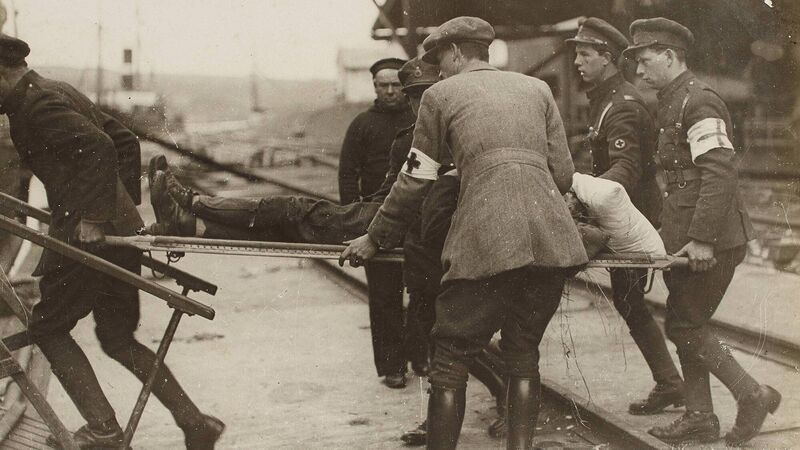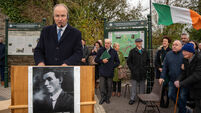UCC-led project offers new insights into Civil War

A soldier wounded after the National Army landing on Passage West, County Cork being conveyed to the base hospital on board the Lady Wicklow [Image: National Library of Ireland]
For decades, historians could only estimate the numbers killed in the Irish Civil War, but now a new research project led by University College Cork lists for the first time all of the combatant and civilian fatalities in the conflict.
The Irish Civil War Fatalities Project, which represents the first systematic attempt to investigate the full human cost of the Civil War, is being launched today by Arts Minister Catherine Martin.
The project covers one of the most complex and controversial periods in Ireland’s history, offering a rigorously researched database with interactive map lists of all of the combatant and civilian fatalities in the 32 counties between the opening shots of the Civil War on June 28, 1922, and the ceasefire and dump arms order on May 24, 1923.
The numbers killed in the Civil War were considerably less than in the War of Independence, the project shows. This is mainly due to the lack of deliberate killing of civilians, who were three times more likely to have been killed in the War of Independence than in the Civil War.
Violent
The project shows the Civil War was more violent, brutal and protracted in counties Kerry, Tipperary and Louth.
The research also suggests a new chronology of the Civil War, contradicting the idea that major combat was over after the first month of the war.
The study of fatalities shows that deaths spiked not only in the opening, “conventional” phase of the war, but also in the peak of the guerrilla war in autumn 1922 and again in March 1923 with a concerted series of reprisal killings.
Led by UCC in partnership with RTÉ and the Irish Military Archives, the project was made possible through funding from the Department of Tourism, Culture, Arts, Gaeltacht, Sport and Media under the historical strand of the Decade of Centenaries Programme 2012-2023.
Tragedy
Launching the project, Ms Martin said the Irish Civil War had been a great national tragedy and left a deep wound in the newly independent State.
“By exploration of the impacts and factual history of the war, UCC’s research serves to deepen our appreciation of the challenges faced and sacrifices made by the individuals and families that made those communities, and the university has done so with a very thorough, engaging, innovative and accessible new resource,” Ms Martin said.
Andy Bielenberg, principal investigator of the Irish Civil War Fatalities Project, and senior lecturer at UCC’s School of History, said the project offered new insights into the Civil War.
“In addition to building a clearer picture of the combatant fatalities of the Irish Civil War, the new research presents a fuller picture of civilian fatalities.
“The interactive map will be an invaluable tool for researching family history, local history, and filling in gaps in our knowledge about the Civil War,” he said.
Findings
John Dorney, historian and research assistant, said some of the most interesting findings of the project came from the data collected about fatalities, as well as raw numbers.
“For instance, we can show that pro-Treaty military casualties were of a significantly lower social class than the anti-Treaty side; that both Dubliners and natives of Cork were overrepresented in the pro-Treaty casualties, while people from Kerry were twice as likely to die on the anti as on the pro-Treaty side; and that while pro-Treaty deaths significantly outnumbered anti-Treaty, the latter were far more likely to executed or killed after being taken prisoner,” Mr Dorney said.









 App?
App?


